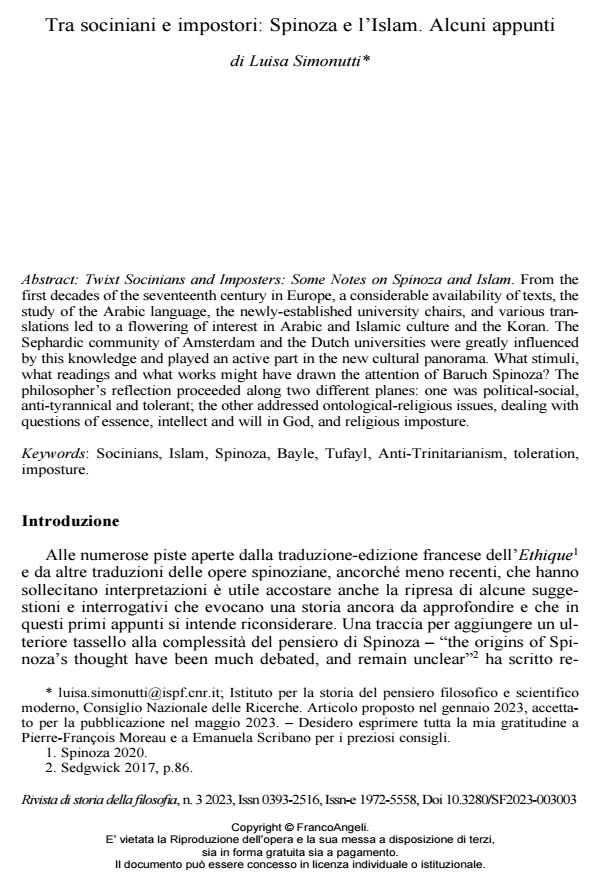Twixt Socinians and Imposters: Some Notes on Spinoza and Islam
Journal title RIVISTA DI STORIA DELLA FILOSOFIA
Author/s Luisa Simonutti
Publishing Year 2023 Issue 2023/3
Language Italian Pages 26 P. 382-407 File size 210 KB
DOI 10.3280/SF2023-003003
DOI is like a bar code for intellectual property: to have more infomation
click here
Below, you can see the article first page
If you want to buy this article in PDF format, you can do it, following the instructions to buy download credits

FrancoAngeli is member of Publishers International Linking Association, Inc (PILA), a not-for-profit association which run the CrossRef service enabling links to and from online scholarly content.
From the first decades of the seventeenth century in Europe, a considerable availability of texts, the study of the Arabic language, the newly-established university chairs, and various tran- slations led to a flowering of interest in Arabic and Islamic culture and the Koran. The Sephardic community of Amsterdam and the Dutch universities were greatly influenced by this knowledge and played an active part in the new cultural panorama. What stimuli, what readings and what works might have drawn the attention of Baruch Spinoza? The philosopher’s reflection proceeded along two different planes: one was political-social, anti-tyrannical and tolerant;; the other addressed ontological-religious issues, dealing with questions of essence, intellect and will in God, and religious imposture.
Keywords: Socinians, Islam, Spinoza, Bayle, Tufayl, Anti-Trinitarianism, toleration, imposture.
Luisa Simonutti, Tra sociniani e impostori: Spinoza e l’Islam. Alcuni appunti in "RIVISTA DI STORIA DELLA FILOSOFIA" 3/2023, pp 382-407, DOI: 10.3280/SF2023-003003